North PitAccording to Global Volcanism Program lava lakes have been present since 1967, and possibly 1906, although the N lava lake became
inactive between 1988 and 1992. Although our main interest, naturally, was in the S pit, we also travelled around the N pit which is
featured on this page. |
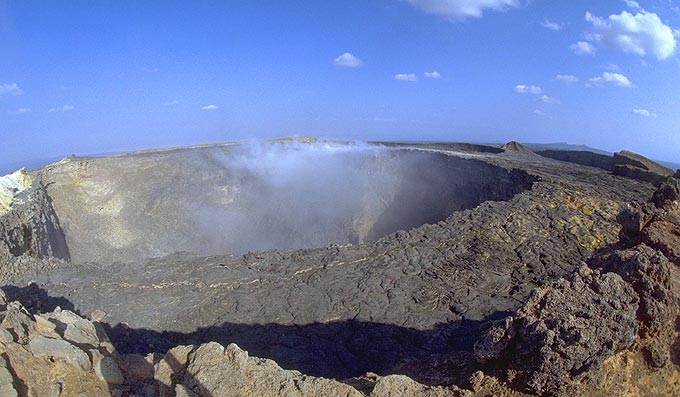 Overview of N pit (fish-eye lens). The S pit can just barely be seen behind the fumaroles. | 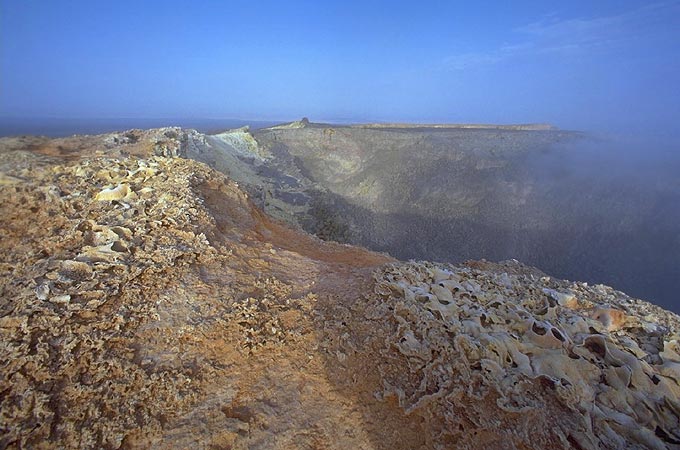 Strange fumarolic deposits along the N pit's northern rim. | 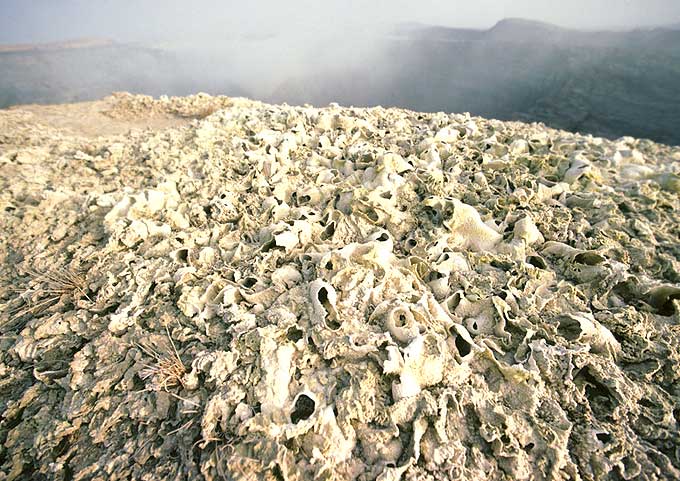 Close up of the same fumarolic deposits. | 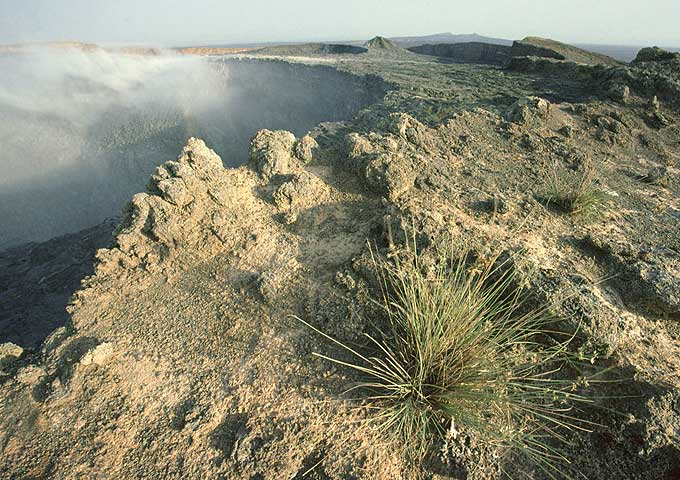 Despite the dry and hot climate, vegetation can be found on the caldera's outer slopes. |
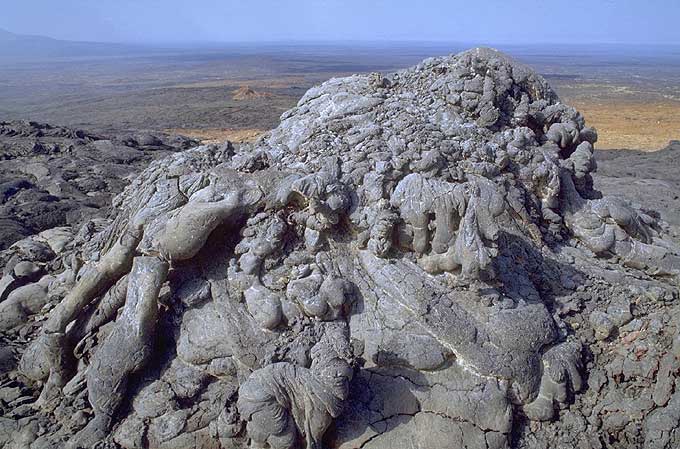 Remarkable hornito formed by extremely fluid lava on the N pit's northeatsern rim. | 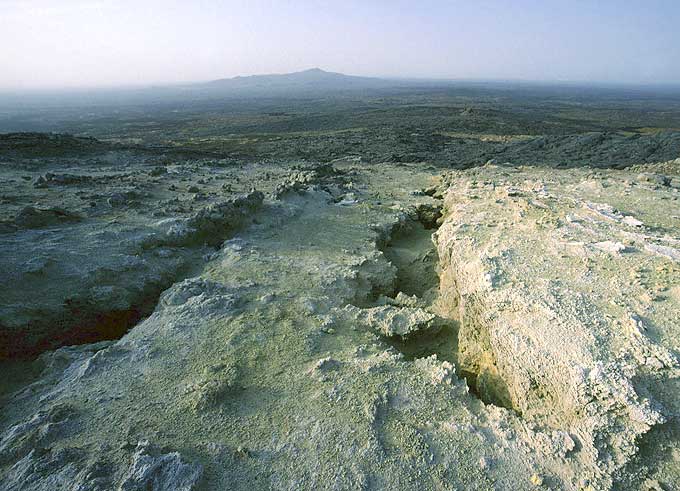 Fracturing due to extension along the rift zone's axis near the N pit's northwestern overflow. | 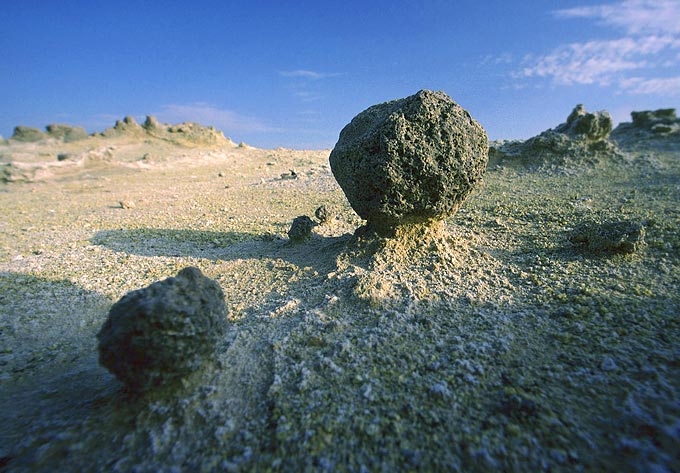 Small volcanic bombs have weathered out of softer tuff. Probably wind erosion played a part in forming these remarkable features. | 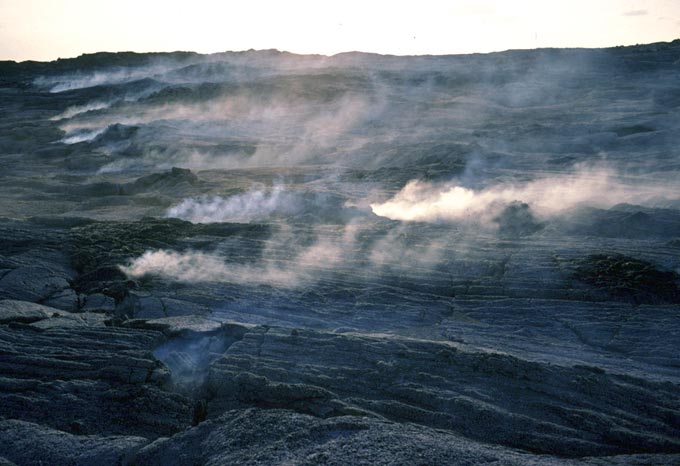 Note how the fumaroles south of the N pit are aligned along a fault line possibly caused by slumping of lava into the N pit. |
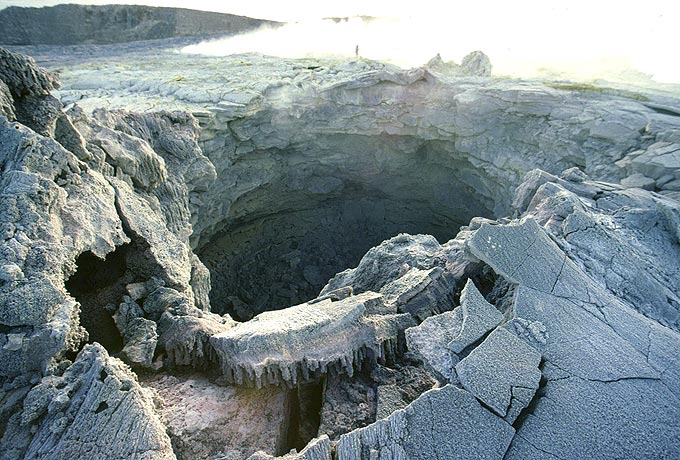 A miniature pit only a few dozens of meters in diameter on the S rim of the N pit. Note lava stalactites in foreground. | 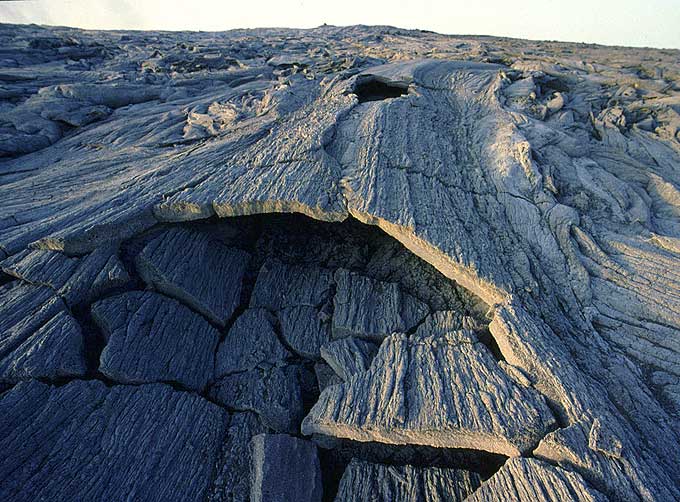 Collapsed lava tunnel between the N and the S pit. Walking in this area was very hazardous... | 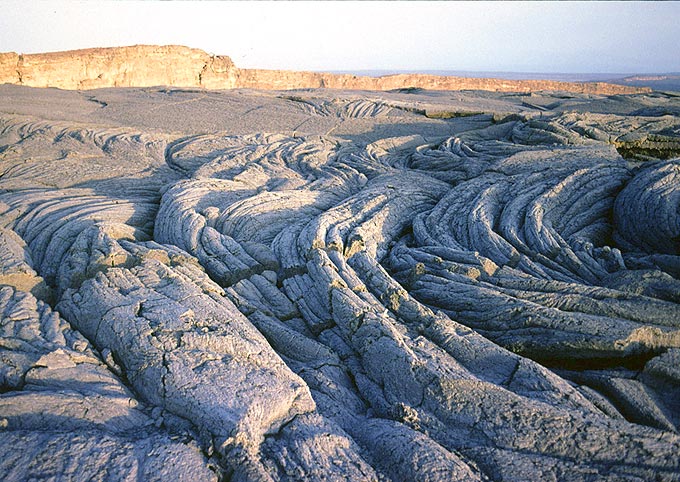 Remarkably big lava ropes between N and S pit. Caldera E wall in the background. | 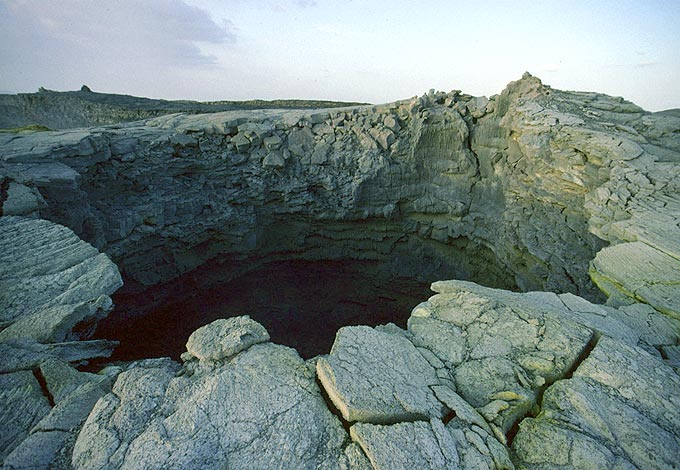 The mini-pit seen from the other side (cf. first image of this row). |
|